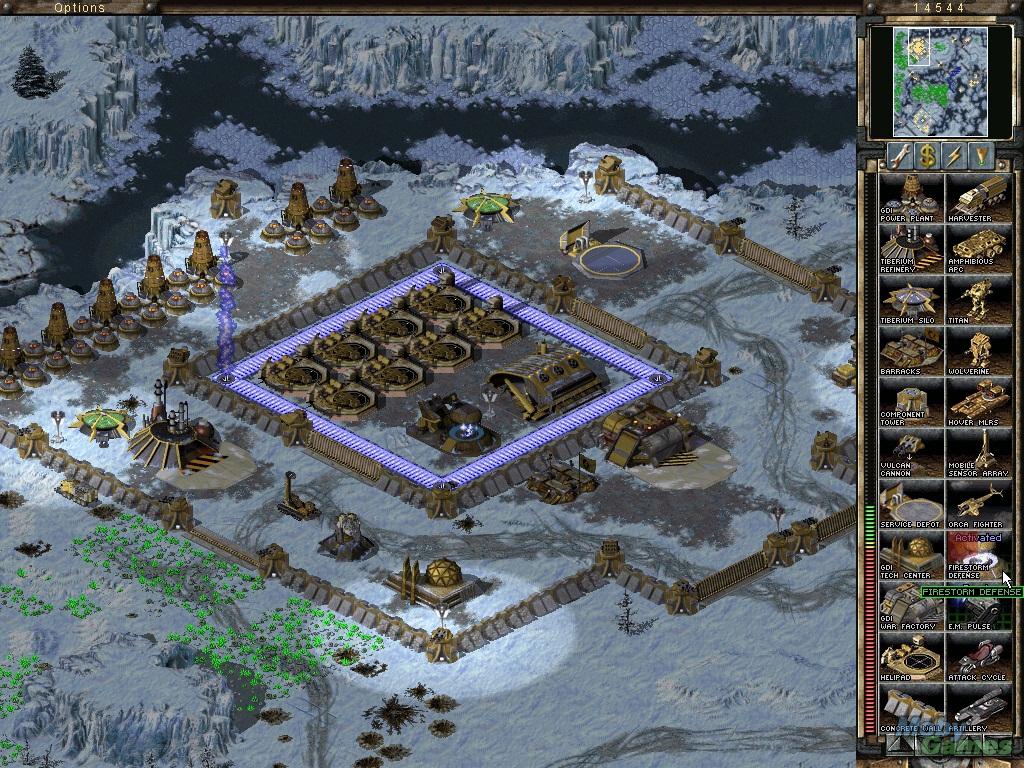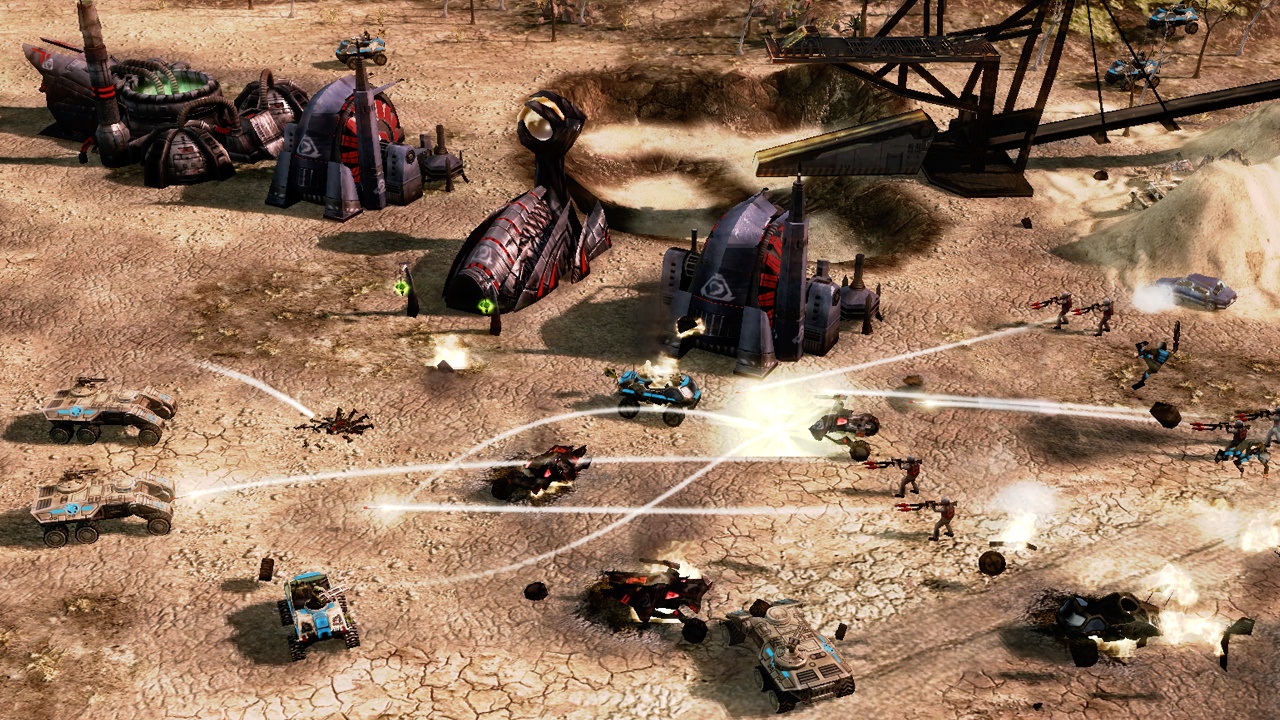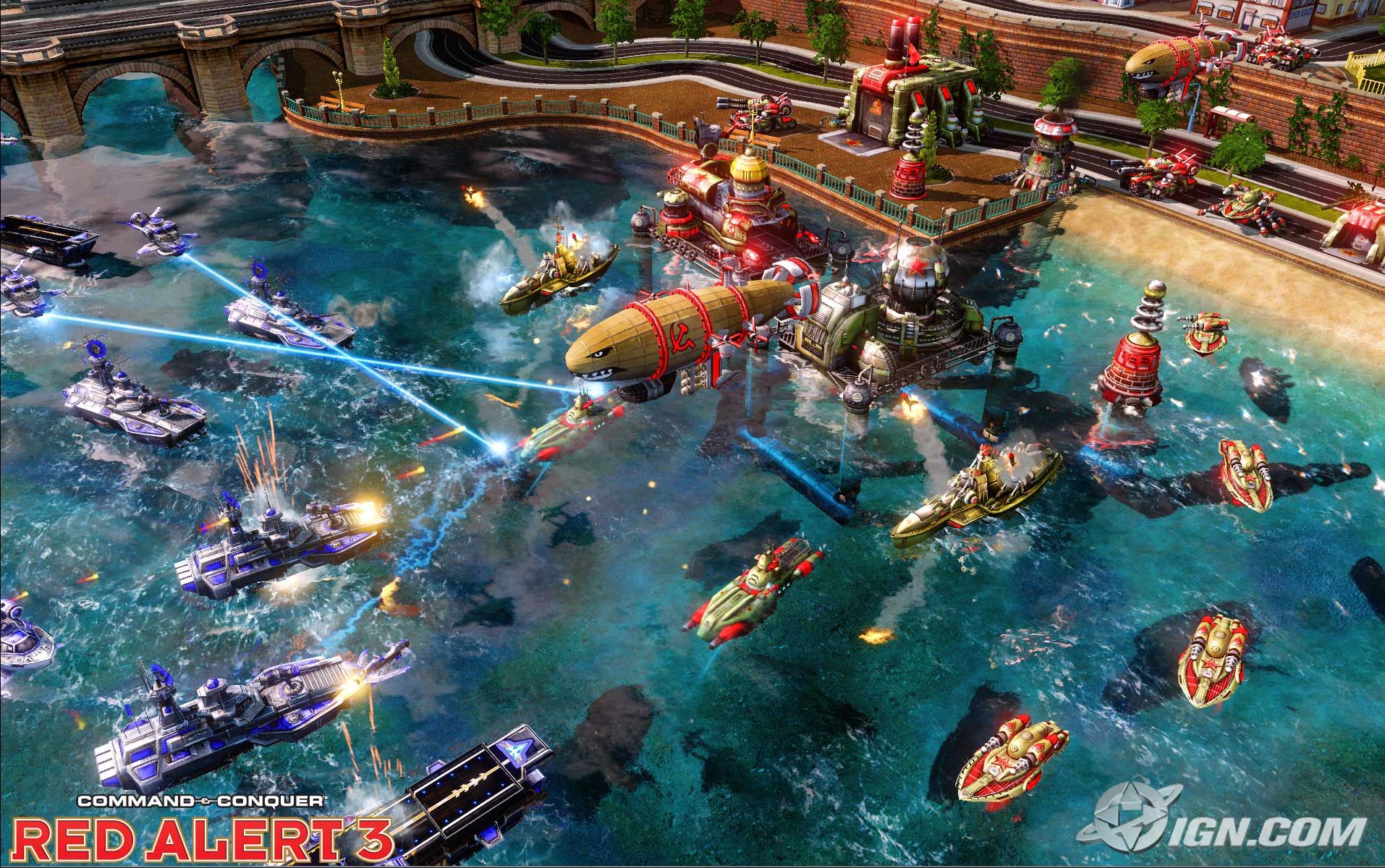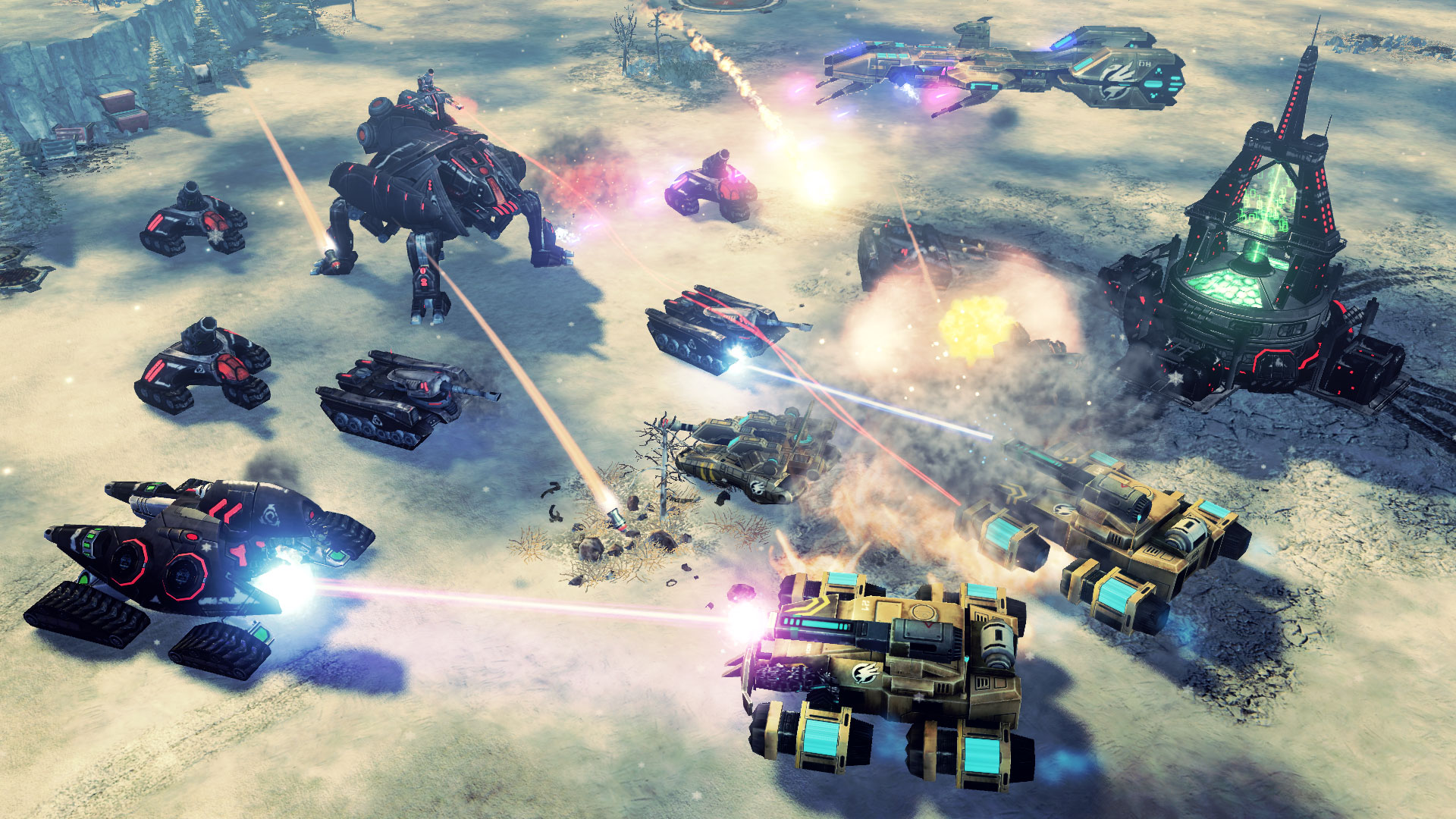
Command & Conquer has been one of the longest running RTS franchises to exist on the PC platform. Spanning more than 21 games, it has won numerous awards for its bold vision and innovation and has set the grounds for real time strategy games alike. However, with the recent news of EA closing down Victory Games and cancelling the latest iteration in the series (previously known as Generals 2), this has left many fans with doubts as to the survival of the franchise. What does this mean for Command & Conquer? Let’s take a trip down memory lane and re-discover what made this series the greatest of its kind, and subsequently, the faults that have led to its demise.

Command & Conquer was the visionary result of Westwood Studios when it leapt onto the screens of our Windows 95 computers in 1995. Originally developed as a result of an earlier Westwood Studios creation, Dune 2, the game was an instant commercial success with players praising the game for its detailed and captivating storyline, fantastic soundtrack, challenging missions, and of course, for its innovative use of full motion video (or FMV for short) cutscenes. In fact, the cutscenes added such a layer of depth and realism to the gameplay that the head villain of the series, Kane, who was portrayed by Joseph D. Kucan, became the longest recurring actor in any video game franchise and rated at number 25 for the best villains in video game history for this year.
Now, lets jump forward one year, riding on the back of the commercial success of their first game, Westwood Studios decided to take a different approach with the series. Titled Command & Conquer: Red Alert, this game featured a host of graphical improvements, AI stability updates, as well as an incredible “what-if” story. Throwing in another feature of a highly user-friendly and an in-depth level editor, this was the first game in the series that allowed players for the first time to create their own missions for single player and online use. Red Alert was also well known for having some of the most crazy and bizarre units in the entire RTS genre, because no one can say they don’t love having portable Tesla coils that can wipe out entire squads of infantry. Red Alert was such a commercial success in all its bizarre and weird mechanics that it helped path the way for its own universe.
Leap forward to 1999, it was the end of a century and Westwood Studios had been very quiet about their latest efforts to further build upon the franchise, and just like a surprise Ion Cannon blast from the sky, Westwood revealed the game that would be the crowning jewel of the entire series. Command & Conquer: Tiberian Sun was the second game to follow the Tiberium universe saga, and fans clashed into the game with critical praise and acclaim, In saying this, the game did have a few drawbacks which many believe were due to the pressure that Electronic Arts placed upon Westwood Studios to release the game before the start of 2000. However, regardless of the slightly troubling lack of polish the game displayed, it was still highly praised for its gripping storyline, diverse range of units and structures, incredible graphics, ability to encounter a third faction (the Tiberium Mutants), and of course, the amazing innovation where the environment could be changed by the battles that happened on it, as well as Tiberium infestation rates. A few months later an expansion called Firestorm was released which corrected and improved on a lot of the features that players felt should have been done on the original release of Tiberian Sun. Even so, the expansion offered an array of new units, new maps, and evolved the already gripping story into that next level of “amazing”, with this action the Tiberian Universe was formed.

After the acquisition in 1998, Westwood Studios was subsequently closed by EA in 2003. However, this was not before one final stroke of genius, Command & Conquer: Generals. Interestingly, this entry did not follow on from any of the established universes, and instead provided a fresh perspective conveying a near-futuristic worldwide warfare based on various real life global super powers. One of the new gameplay features that made the game a commercial success was the addition of experience points and “veterancy” experience. As the player would defeat units in game, they would gain experience that would unlock “Generals Abilities”, a unique set of skills that range from enhancing units to unlocking new unit types. The “veterancy” experience mechanic allowed units themselves to become more powerful with each kill. The true gem of the game was the multiplayer aspect since the game was supremely well balanced with no single faction having more power than the other. This brought about the ability to allow players to experiment with innovative and dynamic strategies that made no two multiplayer games the same. Several months after the initial release of Generals, EA released the expansion pack called Generals – Zero Hour. This expansion, like all of Command & Conquer’s expansions, increased the amount of units and improved upon their already successful gameplay mechanics, and in the case of multiplayer, it increased the amount of factions from six to twelve, making the multiplayer experience truly unlimited in scope and design.
And as such, we have covered the three universes that make up the Command & Conquer Saga. Everything looked to be a success for the series and the fans had high levels of expectations for future games that were yet to be released. However, we would all soon discover that the change to EA studios would bring about a new direction for the series; one that would take a drastic turn in production quality for both the best and the worst.

After the 1998 merger between Westwood Studios & Electronic Arts was established, many fans embraced this as a chance for the series to expand with bold leaps of design innovation, but after the announcement in 2003 that Command & Conquer: Generals was going to be the last game to be produced by Westwood Studios, and this left a very bitter taste in the respective mouths of the fans. In fact, it wasn’t until four years later that Electronic Arts suddenly announced that a third Tiberium universe game was in development with a new studio. Command & Conquer: Tiberium Wars was the first game to be solely developed by Electronic Arts, and it was their chance to show how much they could improve upon an already successful franchise. Unfortunately, this not the case, and the game was generally met with mixed reviews, criticising the narrative structure, visual design and overall mechanics. In a nutshell, the immersive environment that made the Tiberium universe was replaced with generic and boring battlefields, as well as dull “almost uniform” units that had no visual impact upon the maps layout. Don’t get me wrong though, Electronic Arts did pump money into new graphical improvements for Tiberium Wars and providing a list of high profile actors to be used in the cut-scenes, but this was all that Electronic Arts had improved upon, and as a result, the overall game was left broken and not true to the series roots.
With that said, another major problem with the game was the unbalanced units between the factions, which ultimately lead to an unenjoyable multiplayer experience; this was especially damaging to the saga as by this point Command & Conquer had come to be renown for its multiplayer gameplay. A couple of months later Electronic Arts did release an expansion for the game called Command & Conquer: Tiberium Wars – Kane’s Wrath, but this failed to produce any gameplay improvements and instead delivered another dull and thoroughly boring campaign story. Instead, it introduced a further degree of unit variation that lead to even more broken gameplay mechanics; all in all, the entire game lacked the soul and vision that had captured so many fans in the past.
In 2008, Electronic Arts once again announced that they were expanding on the Command & Conquer universe, and were releasing another Red Alert game. Many fans were unsure and unsteady with this decision, but decided to hold out and see how the game would turn out. Electronic Arts were true to their word, and as a result, Command & Conquer: Red Alert 3 was released to mostly positive reviews, with critics praising the graphical improvements and the insane number of bizarre units and weapons (psychic Japanese schoolgirl soldiers and scouting dolphins anyone?). One of the most welcoming additions to the franchise was the emphasis on naval gameplay, with many units and structures being able to be deployed on both land and sea, thus introducing a new level of gameplay. The multiplayer mechanic was once again a resounding success with many gameplay styles allowing for a diverse and unique experience, as well as many hours of replay value. There were only a few criticisms about the game, some of which included A.I pathfinding that was sometimes quite broken, although, subsequent patches would eventually fix the issue. Another criticism was that the storyline could have followed more of Westwood style of dark humor but that was heavily dependent on who was playing the game.

In 2010, Electonic Arts once again announced that they would be finishing the Tiberium Universe with Command & Conquer: Tiberian Twilight. Naturally, the majority fans held their collective breath and waited for the release date with great anticipation as surely EA would improve upon the mistakes of Tiberium Wars to produce a game that would ultimately end the series on a collective high note. Unfortunately, this was not to be, and Tiberian Wars was the nail that sealed the coffin on a saga that needed a serious public relations boost. Like Icarus flying to close to the sun, the game was received with so much criticism that it came crashing down in a fiery demise. The major problem with the game was that EA decided to change the mechanics entirely, and as such, the game was released not as a Real Time Strategy but a Real Time Tactics game. Unsurprisingly, fans did not approve of this shift in gameplay and found it rendered the game into a convoluted mess of unit spawning. Gone were base building and resource management, which was instead replaced by a single mobile base of operations from which you could spawn an army of units, provided you had the allocation quota required. Another problem was the sub-par quality of the single-player campaign, with the story lacking a sense of direction and creativity; even the cut-scenes, which were renown for being superb, were a dull comparison to the games of the past.
The multiplayer component was even worse, with many units being locked until you completed a hefty set of long and daunting combat challenges, leaving players with multiplayer matches that were mostly unbalanced and unplayable. The only positive criticism that the game received was that it looked absolutely stunning, but as the fans were concerned, visual presentation alone was not enough to save this saga from its untimely fall from grace.

One year later, a rumor that began to circulate about a Command & Conquer: Generals game that was already in development, and sure enough, Electronic Arts announced the free-to-play Command & Conquer: Generals 2, which would feature a return to base building and resource management; It also was poised to feature the new frostbite 2 engine for greater graphical and gameplay improvements. This left many fans with a renewed hope that this could finally be the redeeming light needed to resurrect the dying saga. However, once again, not everything was as it seemed. Even though Electronic Arts was working closely with the alpha community, taking back feedback, and constantly trying to improve upon the game, it ultimately led to Electronic Arts pulling the plug on Victory Studios (the current development studio). Sadly, despite a commendable approach, the community testers involved consistently reported negative feedback about the game, fearing it would lead to another Tiberian Twilight fiasco. With that notion, all funding was cut, and alpha of the game was shutdown no sooner than it had opened, leaving the remaining fans devastated and lost for hope for a future reboot of the saga.
And so, there we have it. One of the most iconic games in Real Time Strategy history rising to the peak of its commercial and critical success, to ultimately, and unceremoniously, crash into the sets of obscurity. Without a doubt, there are still many fans out there who have hope that another studio could pickup on the shattered remnants of the franchise, but until that time comes, we will have to remember all the good times that the Command & Conquer has left us with. We can only hope that one day we will hear those three famous words…












